Old Fidel and big cigars
The buildings all around us seemed to be crumbling before our very eyes as we explored these narrow streets, no street lights, only the occasional ancient car rumbling by. But many people were walking about, sitting on their front door step, kids playing in the street, sounds of TVs and music in Spanish playing in back rooms. There was certainly the sense of hardship and poverty but also one of just getting on with life. Were we walking through a Hollywood set or perhaps caught in some time warp from another distant era? No, as it happens we were in Havana Cuba and exploring the streets near our little ‘hotel’ in Old Havana. Truly one of the most extraordinary experiences of our travelling lives.
Being brought up in California in the 60’ and 70’s I was taught that Cuba, that long slender island not far off the Florida coast, was run by a communist dictator whose very existence threatened America. And that may have been true given the global alliances during the cold war but it led to an all out boycott and embargo by everything and everyone in America for all things to do with Cuba. Including actually going to Cuba itself.
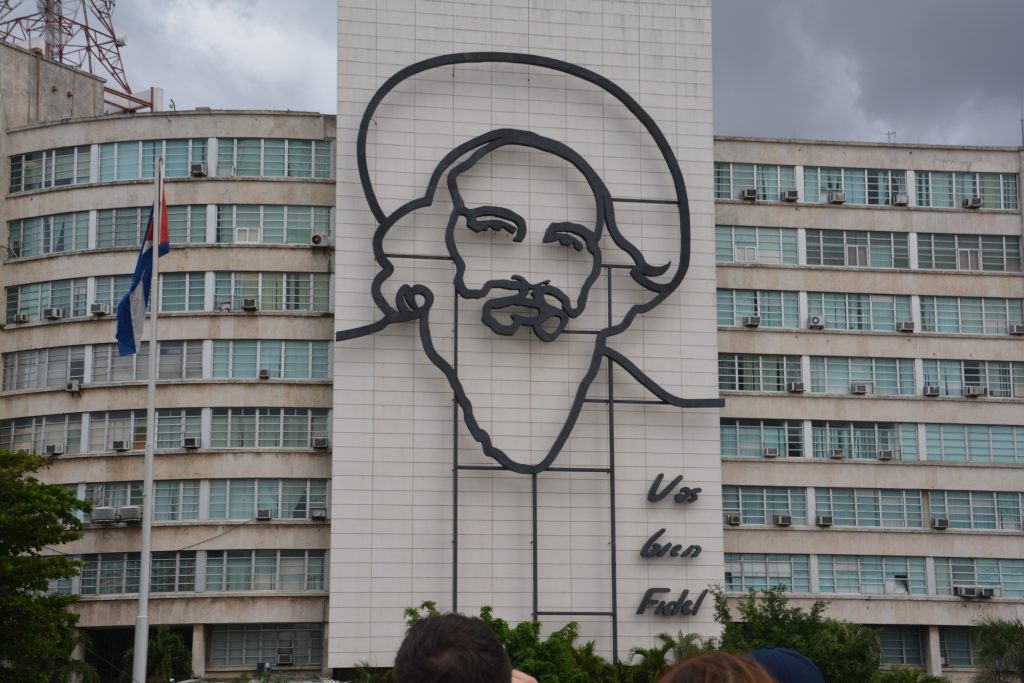
The various images of Fidel Castro – along with Che Guevara – adorn many buildings, billboards and T-shirts in Havana
Well, times change, slowly, leaders of both countries change and the whole world seems to be heading in another direction, for better or worse. The US lifted some of the restrictions to travel to Cuba a few years ago and perhaps Cuba has taken a slightly different approach to the US as well. In any case, for this trip we are Australians, free to visit Cuba at will, and on a rainy day in Cancun we headed to the airport to catch our flights to Havana for a much anticipated six days in Cuba.
But there’s still a few rules and conditions for anyone travelling to Cuba. First of all, no cell phones work there and Internet connectivity is almost non-existent. Second, you can’t use or exchange US dollars or use any western credit cards. And you have to use a special foreigners’ currency, called the CUC, because foreigners are not allowed to use the local Cuban peso.
We had the extra complication – and paperwork – of leaving Mexico without Tramp, who was content to sit in the sun at the Cancun airport for six days. After working our way through those bureaucratic layers we boarded our flight and in less than two hours touched down in Havana, or La Habana as the locals call it, the capital of Cuba.
After dealing with a few aloof Cubans at the airport and a kamikaze taxi driver taking us to our bed and breakfast styled hotel, the modestly named Industria Street Rooms in Old Havana, we had time to explore a few blocks of these fabulous old streets, find a local bar to have a couple of drinks with the locals and then settle in to a nice meal at a local restaurant.
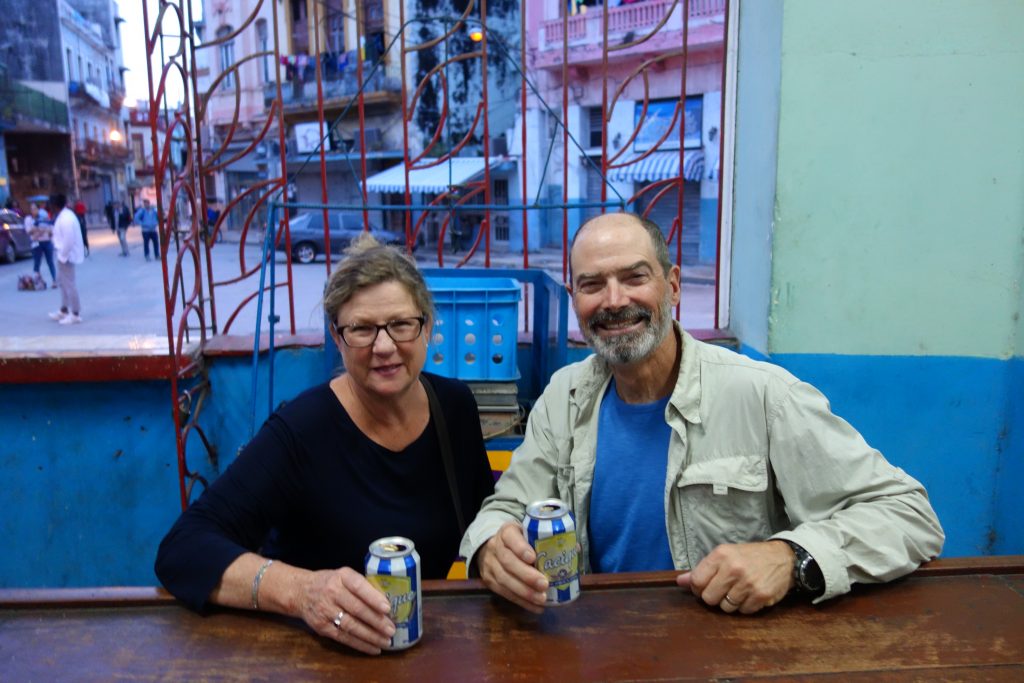
Our first local bar in Cuba – great fun talking to the locals and trying out the beer…and of course a mojito
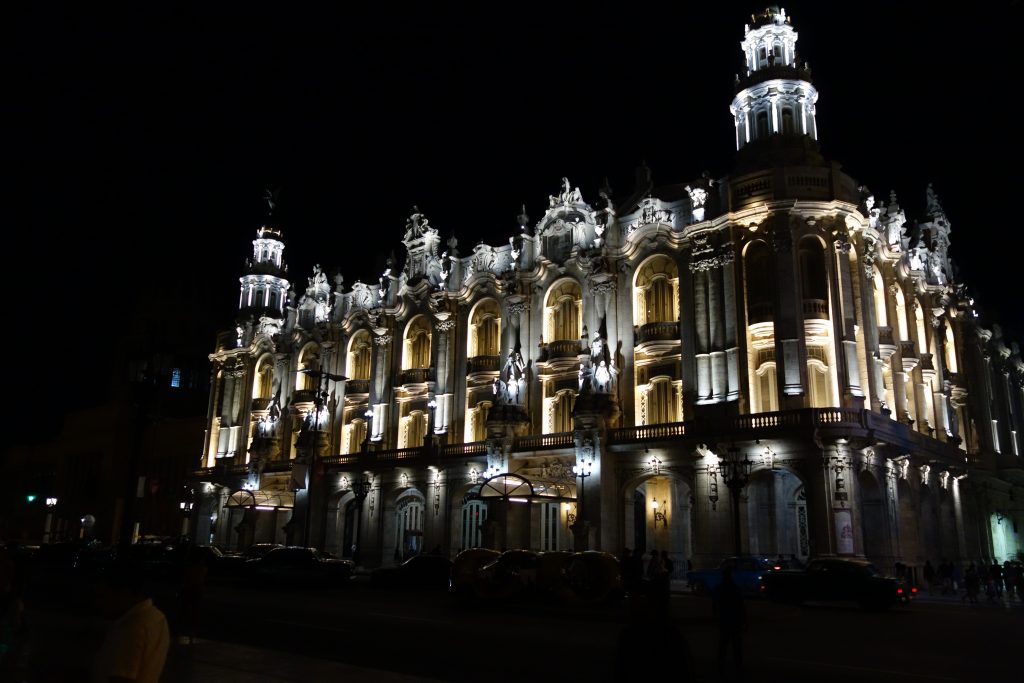
The Grand Theatre on Central Park in Old Havana – this building has been well maintained and looked fabulous at night
Old Havana was absolutely spectacular, the old buildings, many in very poor conditions due to neglect and lack of maintenance, great old American cars from the 50’s and 60’s still prowling about the streets, men peddling small three-wheeled cycles with seats to carry people or goods, washing strung up between old wrought iron balconies, locals going about their business. As I starred gobsmacked at the fabulous old cars and marvelled at the whole scene I couldn’t help but think we had stepped into this amazing time warp. And I didn’t want to leave.
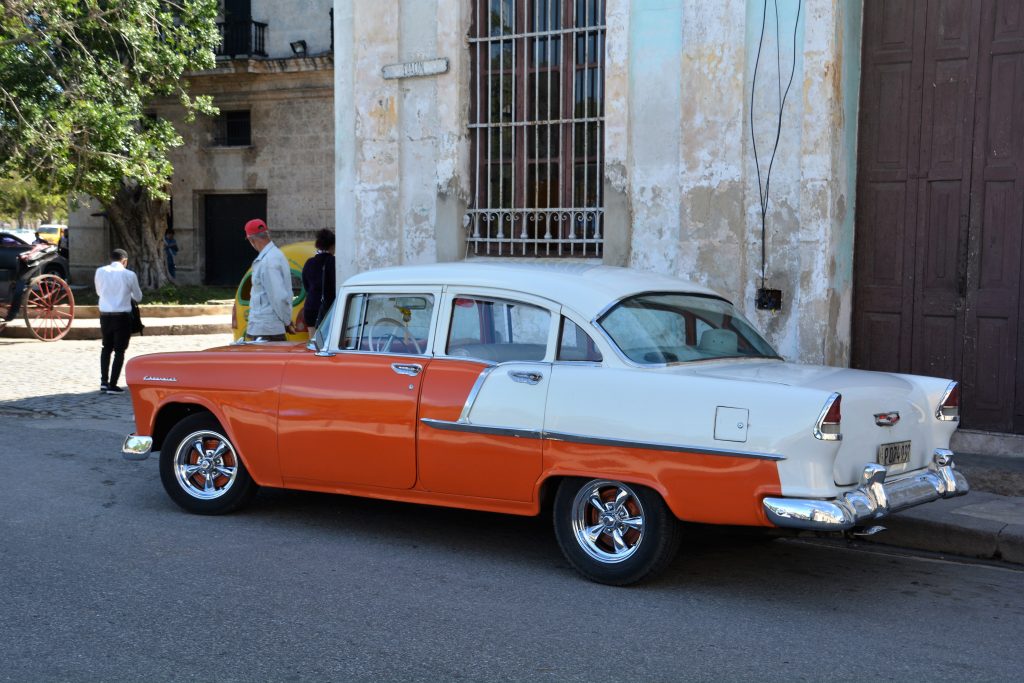
Even if you’re not a car buff – and we are not – you have to be amazed by these beautiful old cars – like this Chevy from the 1950’s
The next day we took to the streets, walking endless kilometres out to the waterfront, through the plazas, along narrow streets, into the cathedral and churches, visiting the numerous fortresses that were built by the Spanish to defend the city, soaking it all in like a dry sponge. At one stage we hired a beautiful 1953 Chevrolet convertible and Pedro, our driver, took us around to some of the sights on the northern side of the harbour. What a treat to be travelling around this fabulous old city in a beautifully preserved vehicle from the distant past, just spectacular.
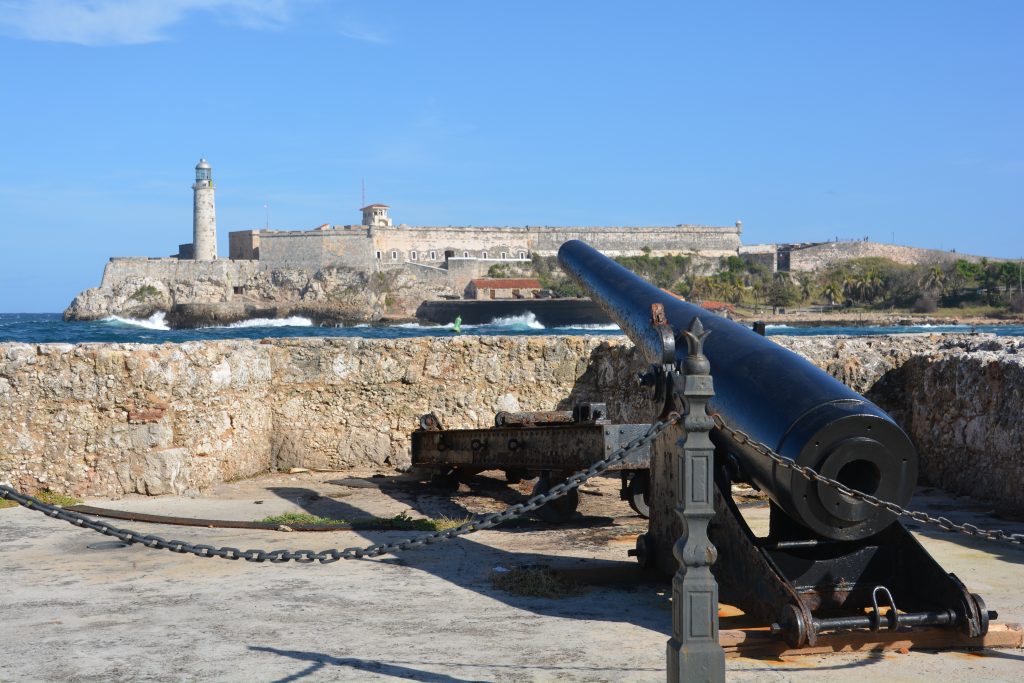
The Spanish built four impressive fortresses on both sides of Havana’s harbour to protect the city from pirates and marauding English
The social scene was in the plazas, many lined with large trees, scattered with benches and filled with locals enjoying the cool breezes and solving the problems of the world. Many plazas featured an old church from the Spanish era, a theatre or large hotels, built for a bygone era but still proudly strutting their stuff.
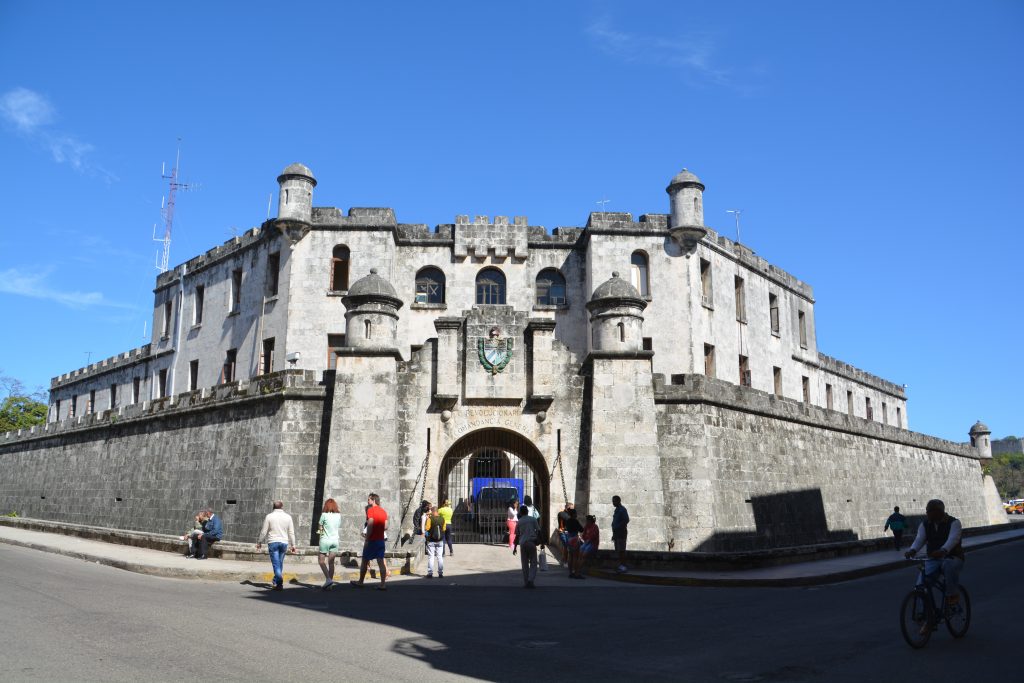
Another fortress, or castle as they call them, this one with a good museum highlighting all the 16th and 17th century shipwrecks and their treasures
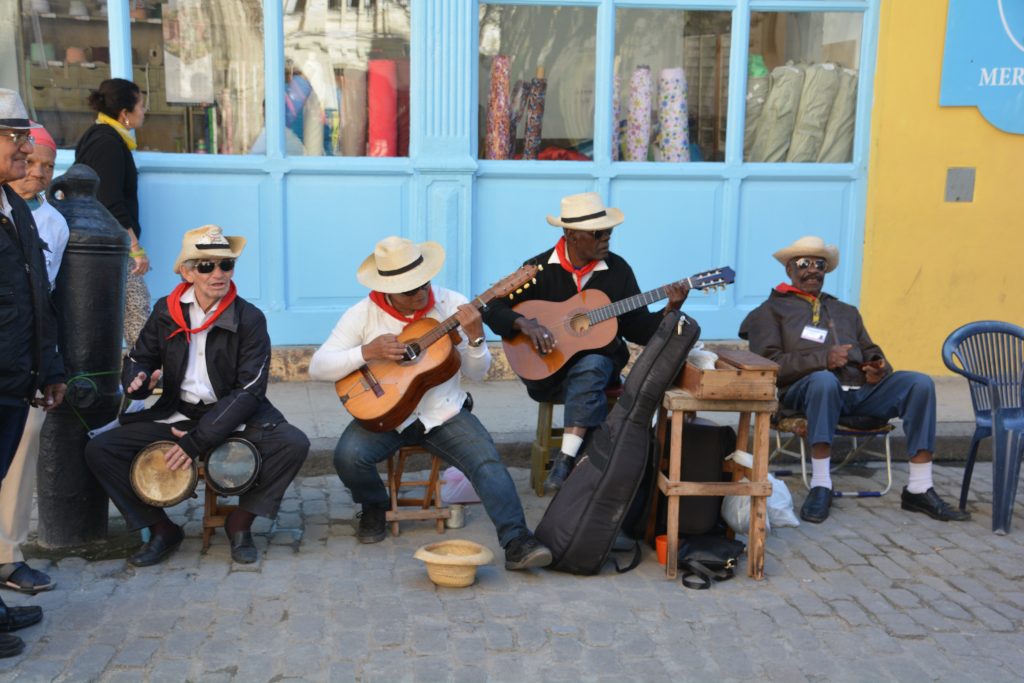
Music is everywhere in Havana, in the bars and restaurants, in the lobby of hotels and even out on the street – great fun to hear these lively local tune
Havana has an impressive history, founded in 1514 – only 22 years after Christopher Columbus ‘discovered’ the new world – as a long-time bastion of the Spanish, notwithstanding the occasional attack by the English and various pirates who sailed these seas. In the 16th to 18th century the Spanish built the fortresses to defend the city, its magnificent churches, broad tree lined streets and many of its administration buildings which are still in use today. And the Cubans, who evolved from a colonial outpost to independence to profound socialism have done a great job of preserving their city, their culture and their heritage.

The Spanish founded Havana early in their exploration of the region and invested heavily in defending and developing the city of Havana
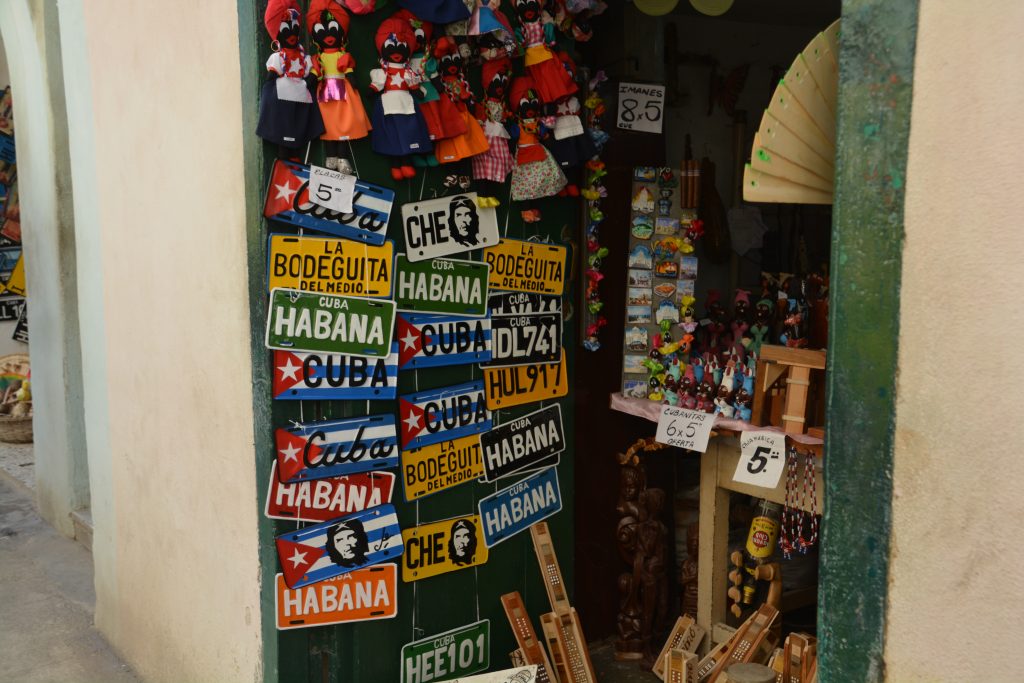
The souvenir shopping isn’t very sophisticated or extensive and it seems to mainly revolve around faux licence plates from the old cars
The two different currencies are a unique feature of Cuba. We mainly frequented local bars and restaurants where there were two different prices – one for the tourists and one for the locals. The tourist currency, the CUC, is pegged at the US dollar on a one for one basis (even though the US dollar is not legally traded in the country) but the local peso seems to run at about 24 to one CUC. If a tourist and a local walk up to the bar and each order a local beer the tourist will be paying much more for the beer in a completely different currency. And don’t get me started on the ridiculously inflated prices for many items only a tourist would buy.
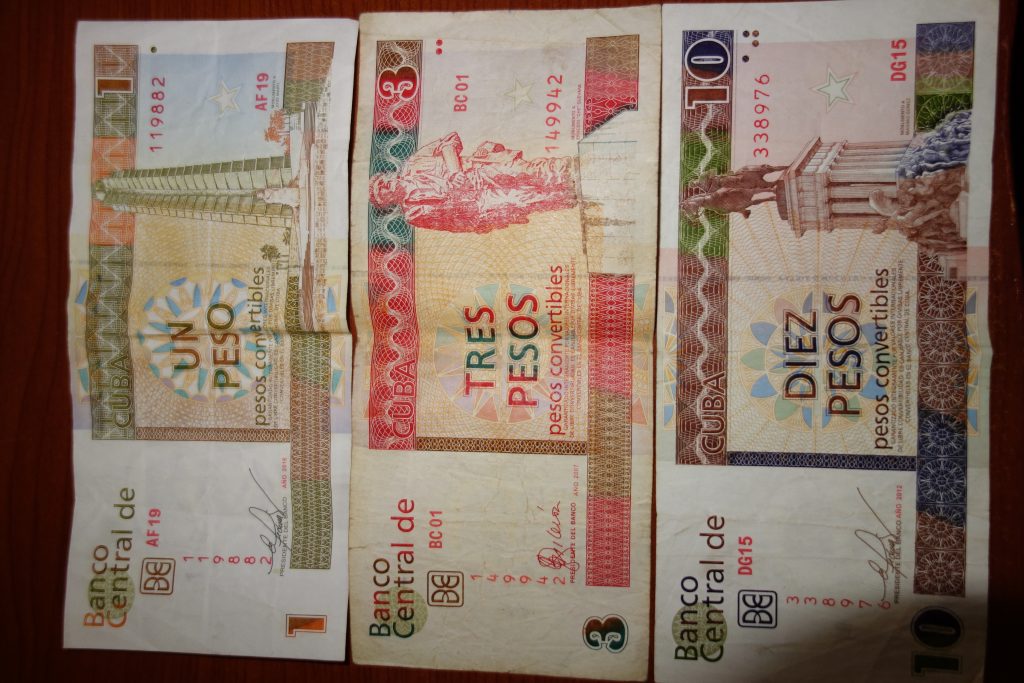
The Cuban Convertible Peso, or the CUC, is the only currency permitted for tourists and has the effect of inflating all the prices for visitors – note the unusual denomination of a 3 peso note
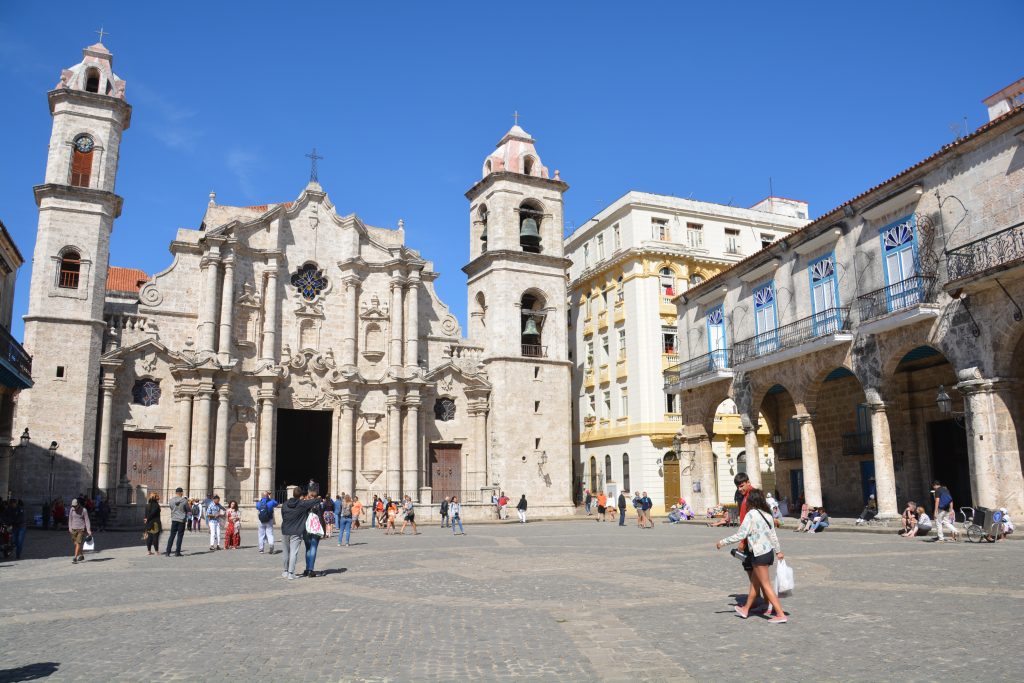
The superb cathedral of Old Havana and Cathedral Square, surrounded by elegant buildings from a bygone era
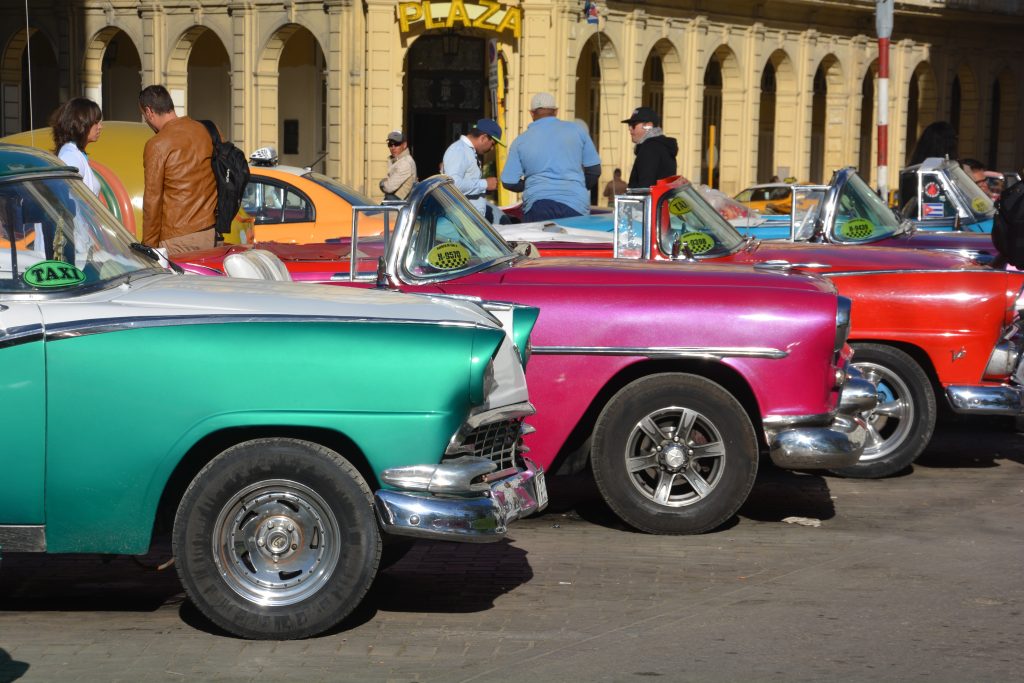
The cars came in a variety of colours – pink was popular because (we were told) the girls love them but there were plenty of choices
We absolutely fell in love with Old Havana. The narrow streets with their beautiful old buildings slowly crumbling apart, the classic old cars and some wonderful scenes like the people on the top floor lowering a bag on a rope with some coins to buy bread from the bread salesman pushing his cart – he simply takes the coins and puts a loaf of bread in the bag which then gets hoisted up to the top floor. Brilliant. Kids playing their version of baseball in the street, groups of teens socialising on a street corner, older people who could probably tell a tale or two just shuffling along. It was the best.
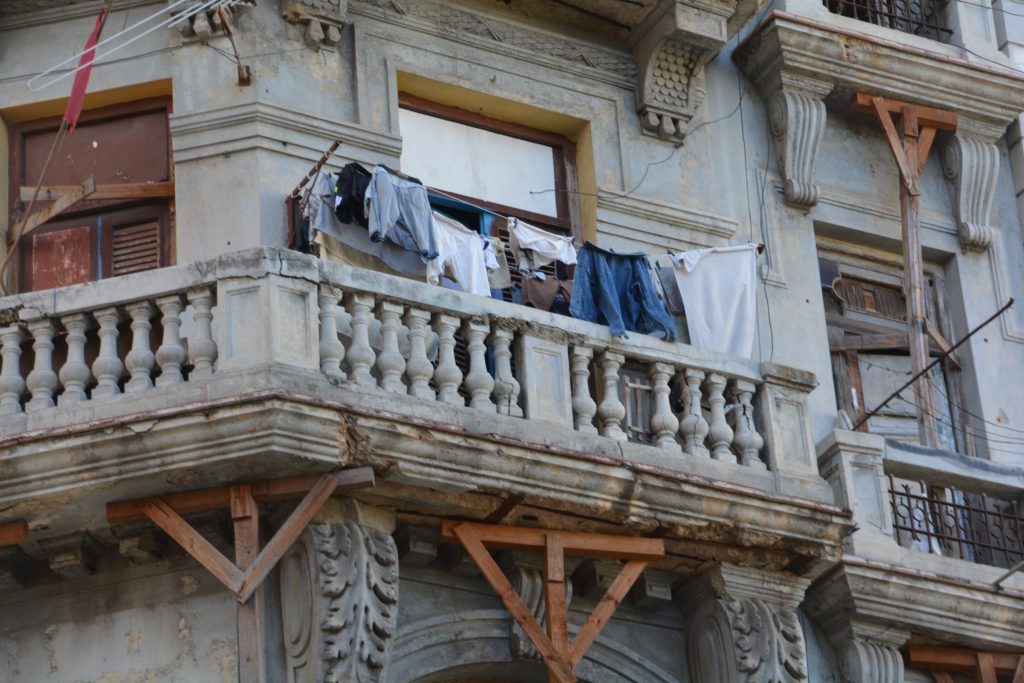
Some of these great old buildings are in serious strife but people still live in them and get on with their daily lives
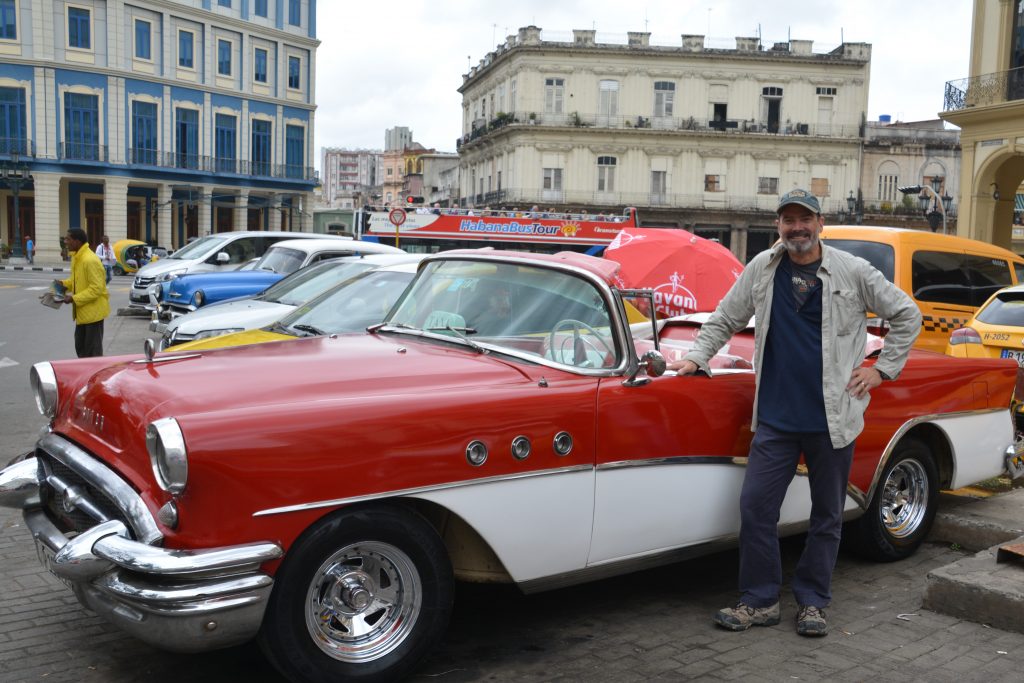
I’ve tried to restrain myself from publishing too many old car photos but they certainly were a fantastic feature of the town
After eating in a very local little restaurant where drinks and a delicious dinner came to $11 for the two of us we conked out on our red satin pillow cases at our friendly little homestay hostel and started the next day fresh and ready to go.
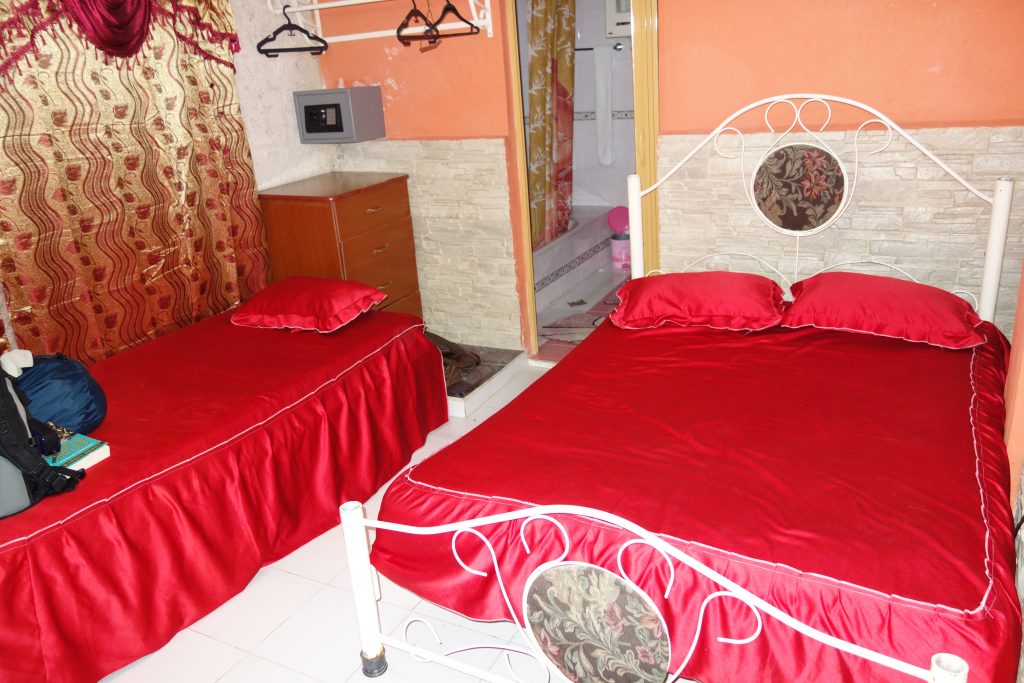
You don’t see this back home – our comfortable little room featured bright red satin bedding and a pink-on-pink bathroom
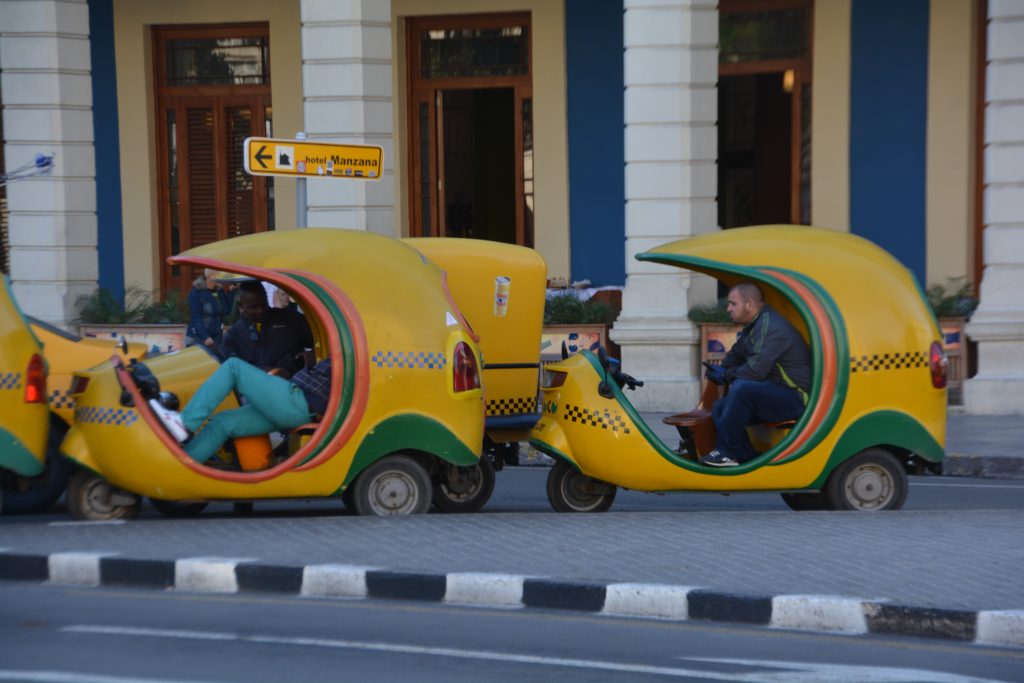
Its not all about old cars – they also had these strange little taxi pods that seemed like they are runaways from Disneyland
Our plan the following day was to drive – somehow – to the southern coastal historic town of Trinidad but how do we get there? We spent the morning talking to various people on the streets and in the shops before we made up our mind. We could have travelled in air-conditioned buses – boring – or in small 8 seater buses called collectivos – a little less boring – but what we really wanted to do was hire a car and drive. Not so easy we learned, mainly because there were no cars available. We met people who had booked a car online only to arrive and find out there are simply no cars. Oops.
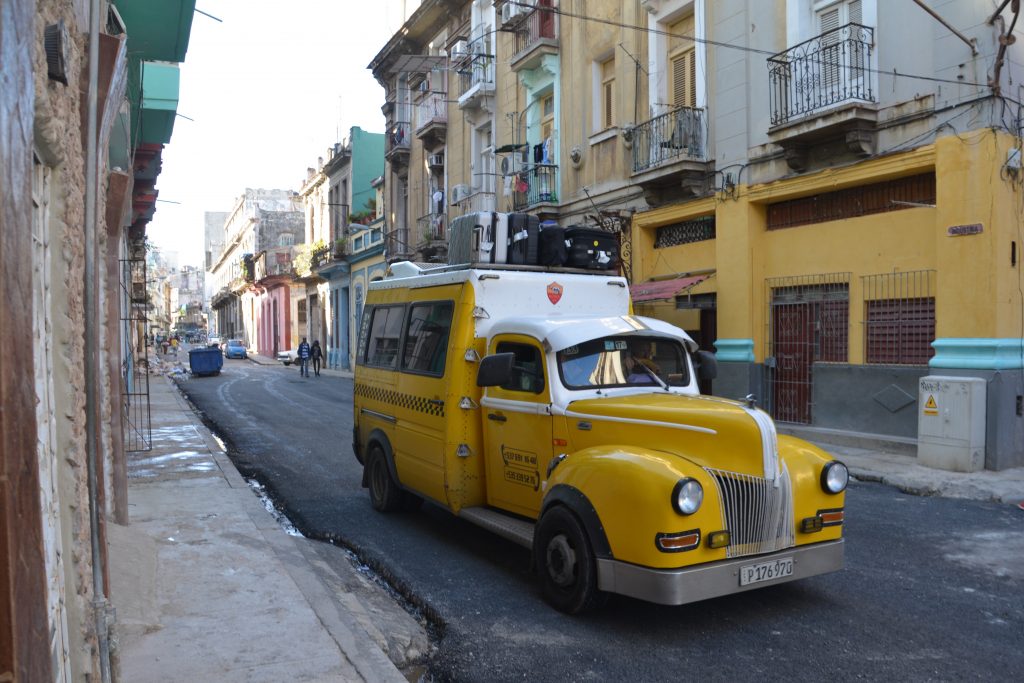
A very modern collectivo which will go to a specific destination once they get 8 passengers – we rejected this option
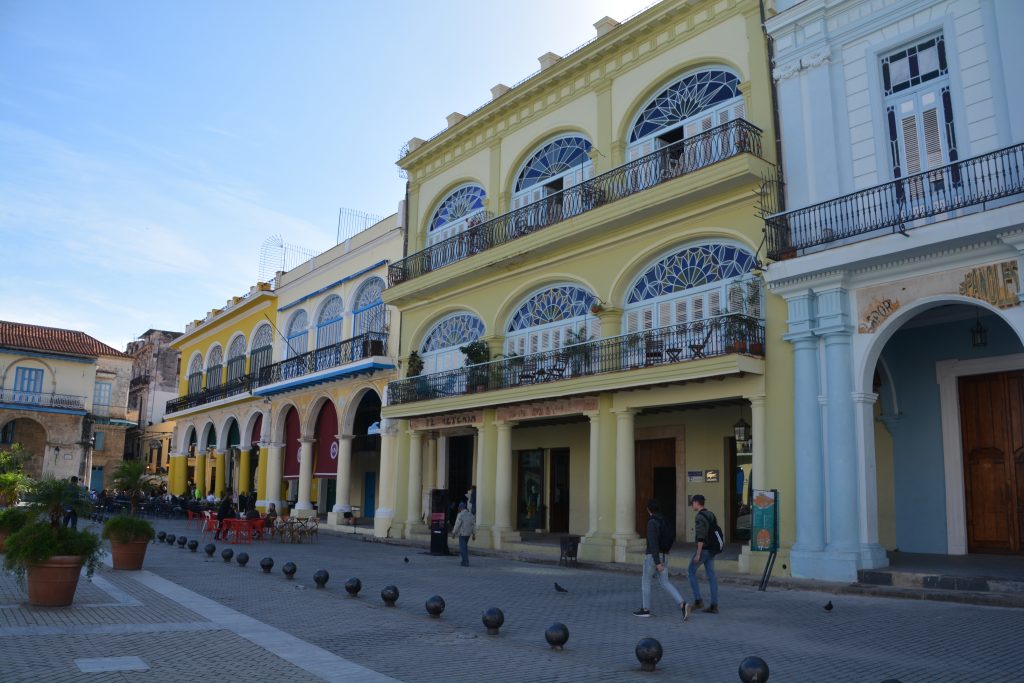
Often the only bit of maintenance done on these buildings was a fresh coat of paint which added a colourful element to the city
In the end we negotiated with a young guy on the street – Raynol – who had an unmarked taxi and gave us the best price for three days of driving to Trinidad, spending a day there and then driving us back to the airport. It wasn’t cheap but as we learned the drivers’ major cost was the money they had to pay back to the government – this in a highly controlled socialist environment where nobody is allowed to get rich – everyone works for the government.
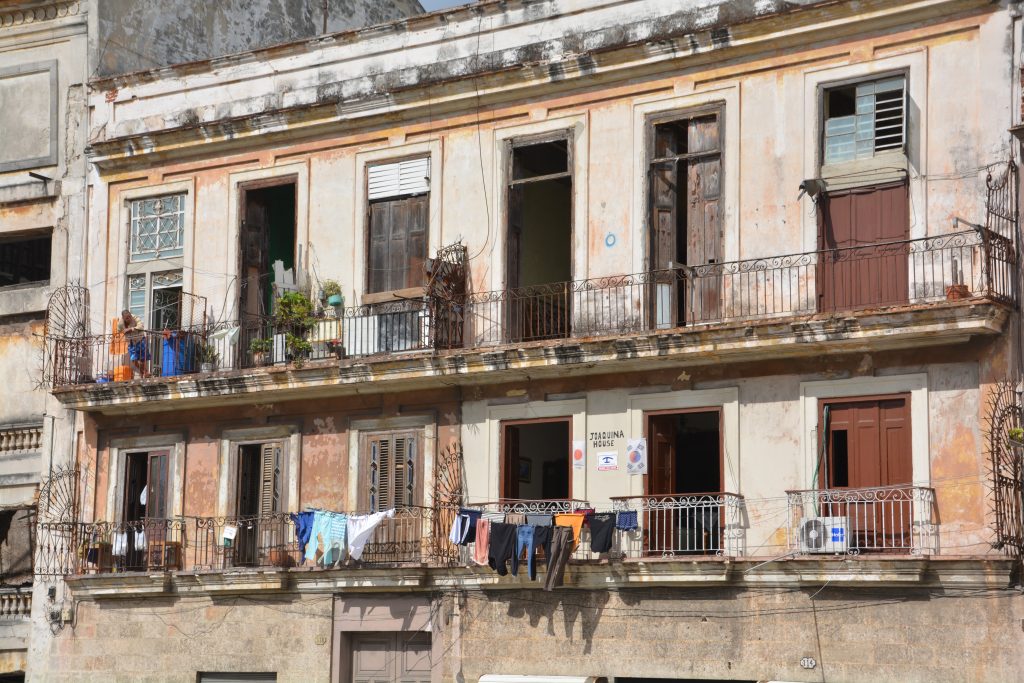
The balconies of Havana tell a great story – a place to catch a cool breeze, dry laundry, chat to neighbours and watch the world go by
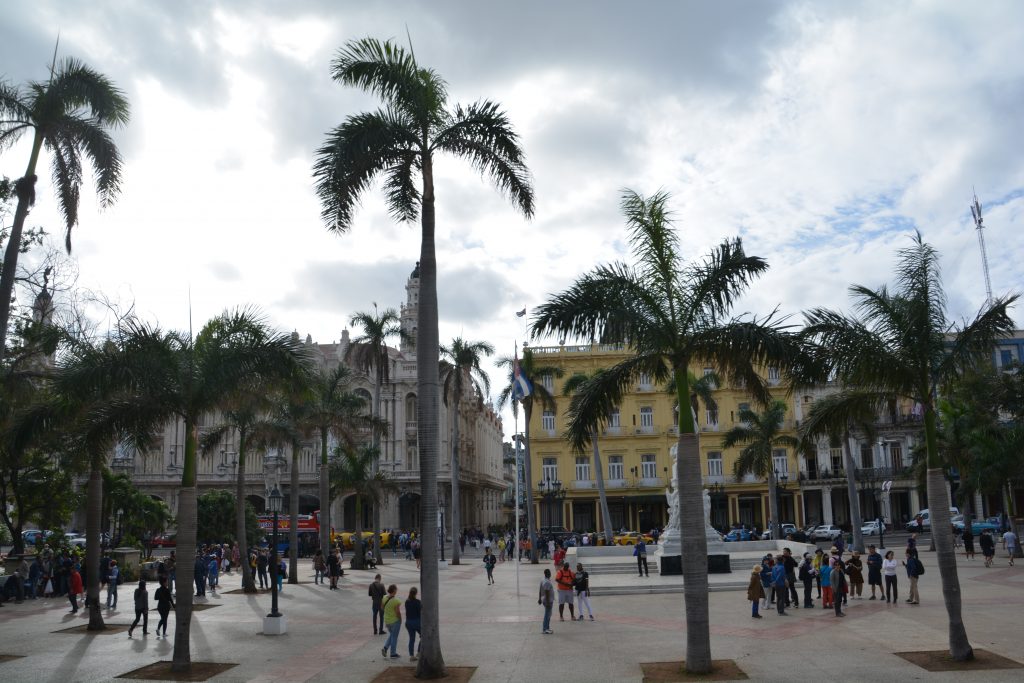
The lively scene at Central Park – one of our favourite spots in Old Havana, with its statue of Jose Marti and people gathering each day to vigorously debate sport – especially baseball
We then went to a local bank to change money, an interesting experience because they won’t let you in until there is someone to serve you inside. We had seen queues of people out front of many buildings and stores but couldn’t quite figure it out at first. We think they don’t want crowds of people inside in case there was some sort of riot over lack of service (which wouldn’t be surprising).
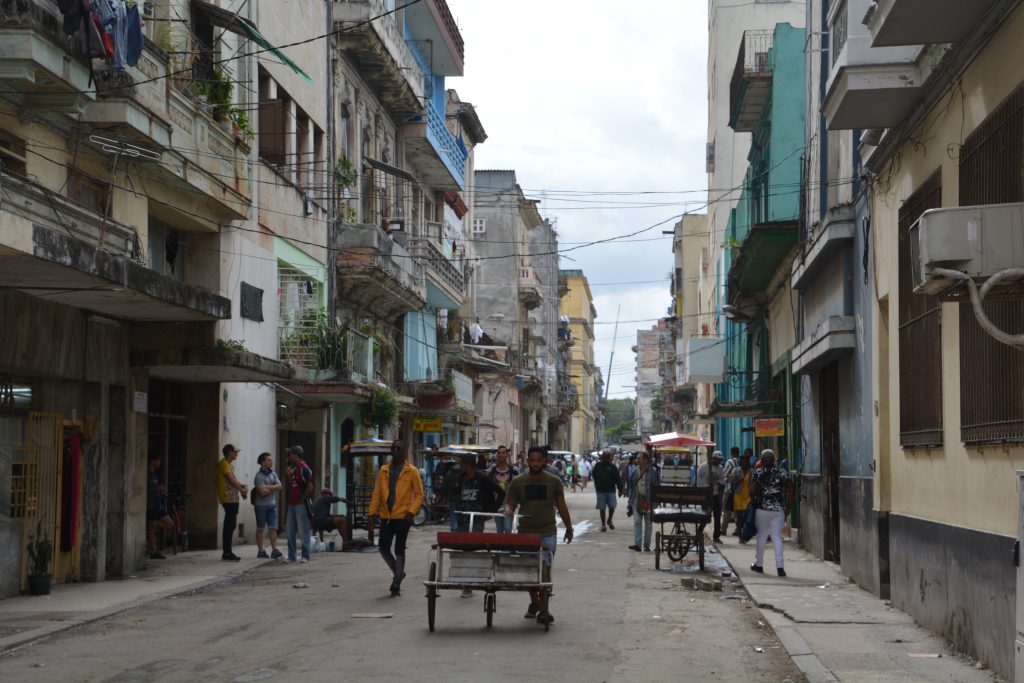
Old Havana also featured many three wheeled pedal-powered vehicles, used for transporting people are goods
After the bank we went to an ice cream parlour where the locals formed a long queue outside to buy ice cream – banana pineapple was the only flavour available that day – even though there were many empty tables inside. Imagine people rioting over ice cream? Anyway, we gave up and found a more touristy place where there was more choice of ice cream and no sign of riots.
We walked around the old Capital building and headed for the famous cigar factory which allegedly provides tours and samples. Unfortunately the factory closed down five years ago, there were no samples and the guard told us they hope someday to turn it into a cigar museum. I asked when the renovations might be complete and he laughed – in Cuba, he said, it may never be completed. Still, no sign of rioting yet.
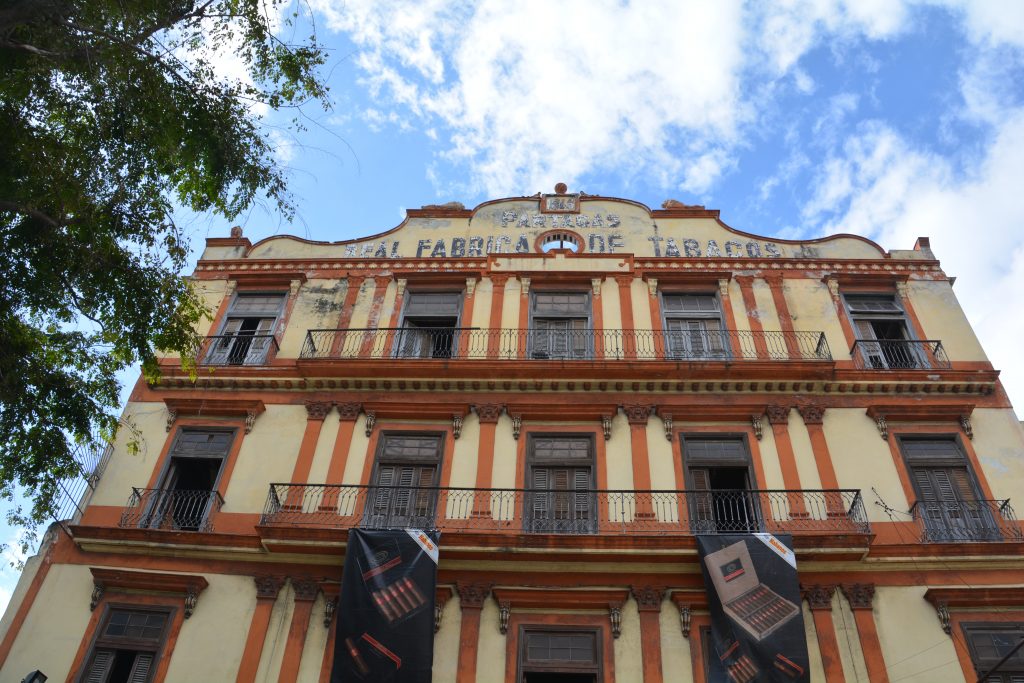
The original and famous cigar factory in Havana – now closed and waiting (a long time) for renovations
We jumped on a topless double decker bus for one of those hop on hop off tours around Havana and loved seeing more of the city from the open-air top, even if we had to duck occasionally for the low hanging branches. We drove through more parts of Havana, including the so-called New Havana, and got a better perspective of what strong socialist rule can do to a city and a people.
Most of the buildings were 50’s and 60’s old style, run down and falling apart, very few privately owned cars, most people idling their time at bus stops waiting for transport to or from somewhere. Parks were brown and neglected, waterfronts dirty and unusable, attractions such as a circus and the aquarium had all seen better days a long time ago.
We hopped off at Plaza de la Revolution with its huge images of Che Guevara and Fidel Castro on the sides of buildings and their independence hero Jose Marti standing tall in a massive statue in front of the huge tower centring the plaza. Interestingly, Jose Marti seemed to get the statues around town while Che and Fidel ubiquitously adorn the sides of buses and buildings, the sloganeering billboards, the T-shirts and coffee cups.
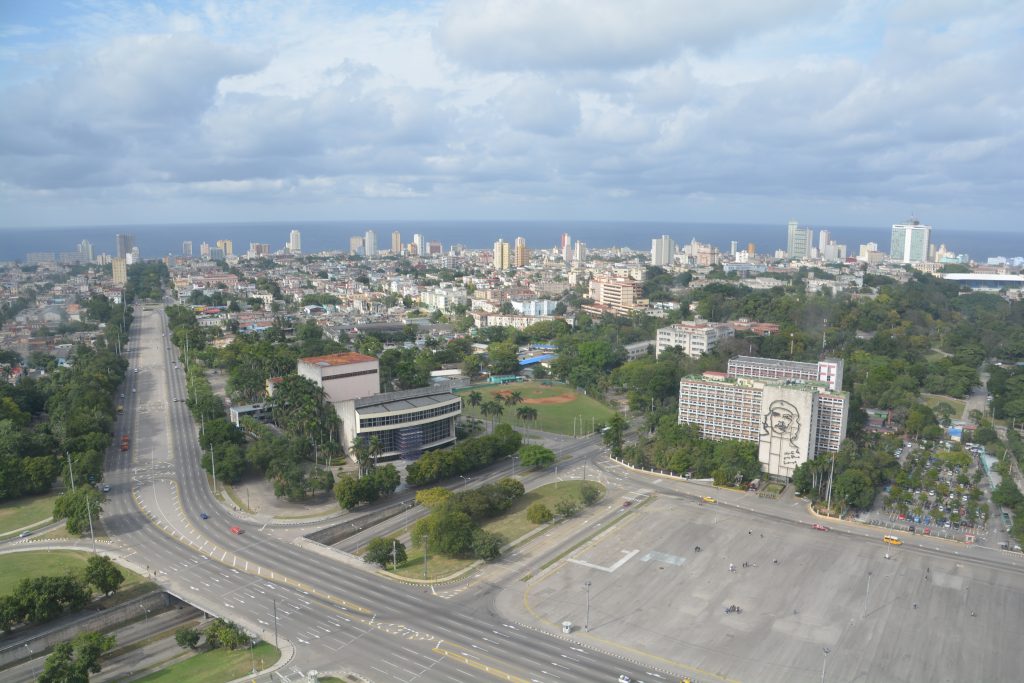
Views from the top of the tower in Plaza de la Revolution – note the beautiful wide streets and no traffic
We caught the lift to the top of the tower for grand views of Havana all the way to the coast and then picked up our bus at a local bus stop. We had time to observe this mellow crowd as we all waited for our respective buses – they all seemed resigned to their fate, just getting on with life, doing the best they could.

A common scene in Havana – crowds of people forlornly waiting for a bus. Private ownership of cars is almost unheard of in Cuba.
Havana was an extraordinary cultural, political and historical experience, we loved every moment of it, but we now had plans to venture further afield to one of Cuba’s founding cities – the historical port town of Trinidad. We couldn’t wait to see what else Cuba had to offer.
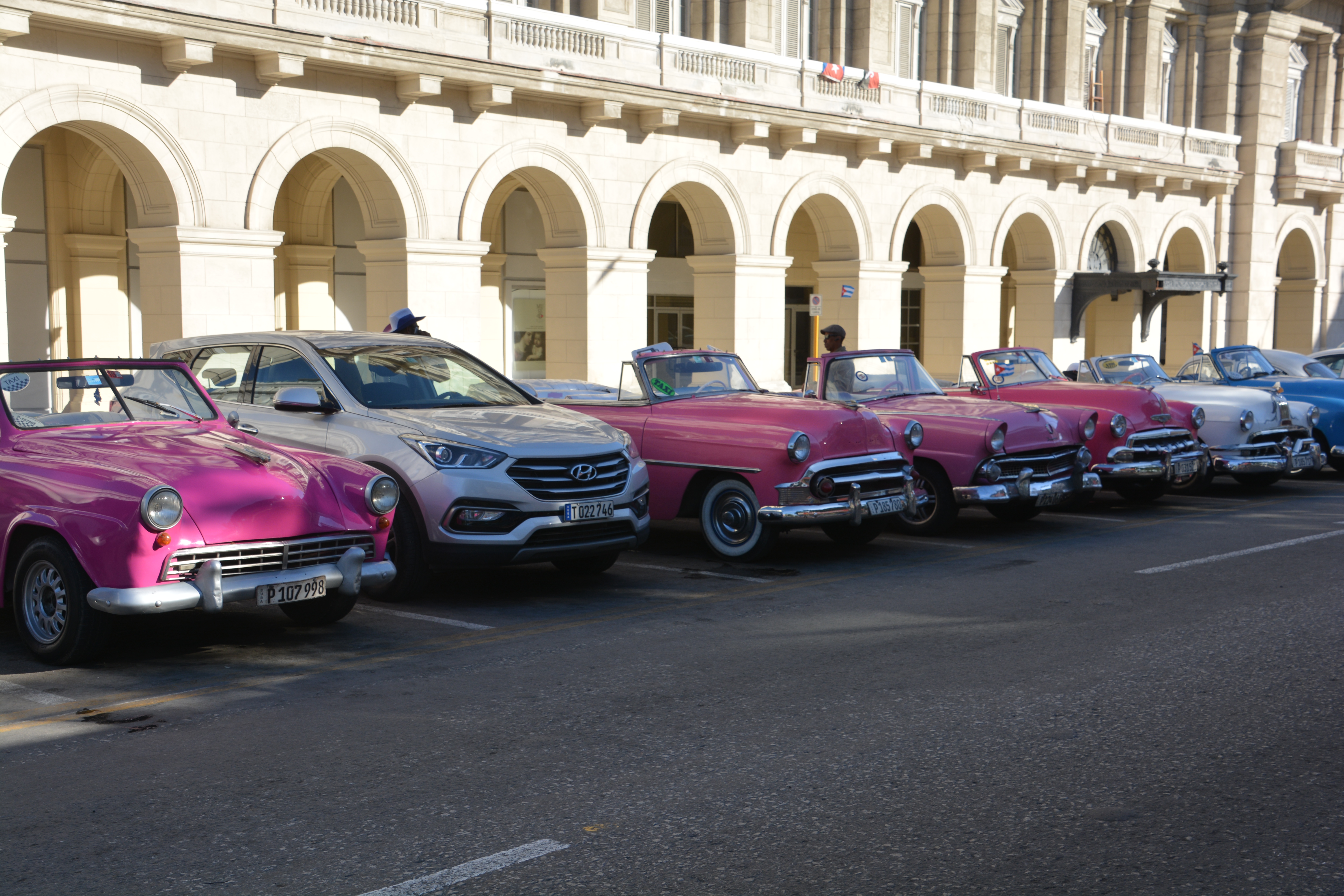














I am loving your new adventures. They would be a shock to my education but you seem to handle them well. Stay safe xo
Hi Anne, we’re also learning amazing things every day. Cuba was a real eye-opener in many ways and we wish we could have stayed longer.
See ya, Bill